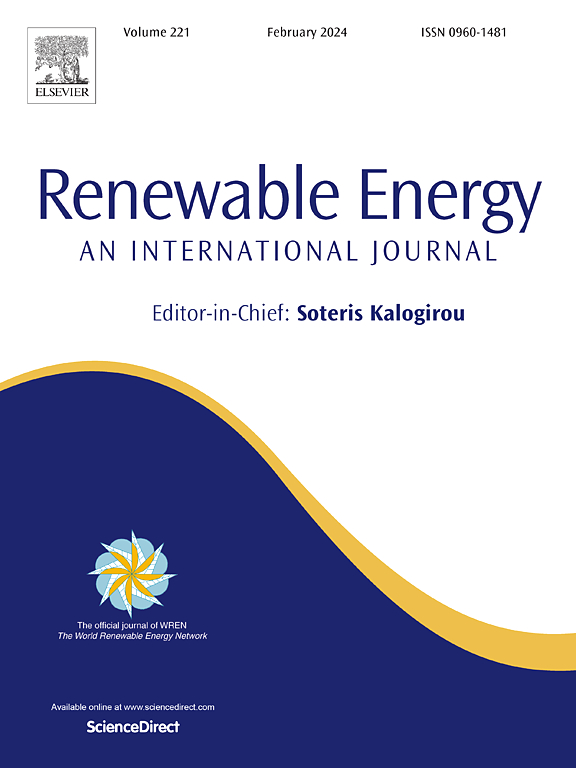Experimental analysis of thermal energy variations in parabolic dish solar collector with hybrid heat storage medium
IF 9
1区 工程技术
Q1 ENERGY & FUELS
引用次数: 0
Abstract
This study tests a solar thermal system for household hot water, combining a parabolic dish collector with a dual-purpose heat storage medium. It examines how factors like heating fluid flow rate, storage material composition, and cold-water flow rate impact heat transfer efficiency. Distilled water was used as the heat transfer fluid, while a mixture of Erythritol and 1.5 wt % Co3O4 nanoparticles served as the heat storage medium, capturing solar energy during the day and releasing it at night. The system performed best when the solar receiver absorbed 77.5 W of heat at a flow rate of 0.5 l/min. Heat transfer efficiency improved as the flow rate increased to 2 l/min but declined beyond this point. The maximum storage capacity was 220 W using only Erythritol, but adding Co3O4 nanoparticles enhanced efficiency by boosting thermal conductivity. Cold-water flow rates between 0.5 l/min and 2 l/min affected convective heat transfer, with lower rates reducing efficiency. The system's peak performance occurred between 06:00 and 14:00 due to direct solar radiation. While individual components had lower exergy values, the overall system demonstrated a high sustainability index, effectively storing and delivering solar energy for continuous water heating.
混合蓄热介质抛物盘式太阳能集热器热能变化的实验分析
本研究测试了一种家用热水太阳能热系统,该系统结合了抛物盘集热器和两用储热介质。它检查了诸如加热流体流速,储存材料成分和冷水流速等因素如何影响传热效率。蒸馏水作为传热流体,赤四糖醇和1.5 wt % Co3O4纳米颗粒的混合物作为储热介质,白天捕获太阳能,晚上释放。当太阳能接收器以0.5 l/min的流速吸收77.5 W的热量时,系统表现最佳。当流量增加到2 l/min时,传热效率提高,但超过2 l/min后传热效率下降。仅使用赤藓糖醇的最大存储容量为220 W,但添加Co3O4纳米颗粒通过提高导热性来提高效率。冷水流量在0.5 l/min和2 l/min之间会影响对流换热,较低的流速会降低效率。由于太阳直接辐射,系统的性能峰值出现在06:00至14:00之间。虽然单个组件的火用值较低,但整个系统表现出较高的可持续性指数,有效地储存和输送太阳能,用于连续加热水。
本文章由计算机程序翻译,如有差异,请以英文原文为准。
求助全文
约1分钟内获得全文
求助全文
来源期刊

Renewable Energy
工程技术-能源与燃料
CiteScore
18.40
自引率
9.20%
发文量
1955
审稿时长
6.6 months
期刊介绍:
Renewable Energy journal is dedicated to advancing knowledge and disseminating insights on various topics and technologies within renewable energy systems and components. Our mission is to support researchers, engineers, economists, manufacturers, NGOs, associations, and societies in staying updated on new developments in their respective fields and applying alternative energy solutions to current practices.
As an international, multidisciplinary journal in renewable energy engineering and research, we strive to be a premier peer-reviewed platform and a trusted source of original research and reviews in the field of renewable energy. Join us in our endeavor to drive innovation and progress in sustainable energy solutions.
 求助内容:
求助内容: 应助结果提醒方式:
应助结果提醒方式:


